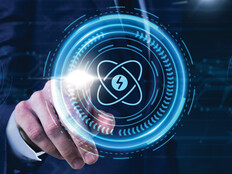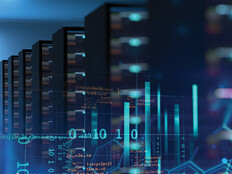Green Machines
Green Machines
Campuses find ways to save power without spending too much green.
Power consumption has come front and center in IT equipment purchasing and management over the past few years, with internal and external forces driving organizations in every sector to try and curb energy consumption.
There are plenty of reasons for this: rising energy prices, acts of Congress, executive orders at the state and federal levels, and internal cost control efforts.
Besides keeping regulators off your back, you can achieve significant savings in the data center and at the desktop of every employee, student and faculty member.
Energy Star, established by the Environmental Protection Agency (EPA) in 1992 to certify and label energy-efficient products, reports that about 100 million desktop computers consume more than 1 percent of the nation's electricity.
According to a recently published study by Jon Koomey of Lawrence Berkeley National Laboratory, the nation's servers utilize about 0.6 percent of the electricity for the entire country. When accounting for cooling and other support infrastructure, the amount consumed by servers and data centers doubles to 1.2 percent.
When looking at desktops, the biggest savings come from enabling Monitor Power Management (MPM) and Computer Power Management (CPM) to put monitors and PCs into low power states when not in use. This saves between $20 and $100 per PC per year, and requires little staff time and capital expenditure.
“Power management of PCs and monitors is a really cost-effective way of cutting energy use of IT equipment in the short term,” EPA administrator Steve Ryan says.
A host of open source and commercial software packages are available to IT administrators to manage MPM and CPM settings in desktops. Microsoft Vista includes native support for managing these settings via group policy.
Leave a Wakeup Call
The University of Wisconsin-Oshkosh's IT department began a power-saving program by enabling CPM on a few hundred lab computers. After determining that Wake-On-LAN was the most effective method of accessing the sleeping PCs for maintenance after hours, they proceeded to roll out CPM campuswide, says Andrew Knoke of the IT team's LAN/PC support staff. Wake-On-LAN is a utility that lets an administrator wake a sleeping computer remotely so all of the university's computers don't have to be turned on manually every day.
Knoke says nearly all of the 2,500 computers on campus managed by his team now run Wake-On-LAN. “We started out with the labs, but we've now gone almost campuswide,” Knoke says. “Initially we had a few complaints, but now people are getting used to it and we have no complaints.”
On some campuses, the students take the power managment initiative.
The University of Pittsburgh embarked on a student-run “Sheep” Monitor Power Management Campaign. Students are encouraged to download and install EZ Wizard power management software from the Energy Star Web site in hopes of curbing energy costs of more than $1 million generated from about 26,000 computers on campus. EZ Wizard automatically puts monitors into “sleep mode” whenever a computer is idle. The computer wakes whenever the mouse moves or a key is pressed on the keyboard.
Where does the “Sheep” title for the program come from? The first 200 students who downloaded the software received a squeezable toy stress sheep for their efforts.
University of Buffalo's “Do It In The Dark” campaign encourages students to turn their computers off when not in use, and its website shows students how to activate power management features.
There are also ways to make computers use power more efficiently when in use. The newest revision of the Energy Star Computer Specification takes effect this July. Energy Star maintains that organizations can save an average of $14 per computer by choosing PCs that comply with its standards.
The State University of New York (SUNY)'s Energy Strategic Planning Task Force was formed to determine how the largest state university system in the nation could meet the demands laid out by then New York Governor George Pataki's 2001 order to make state agencies more energy efficient.
SUNY Fredonia evaluated its campus for areas to save energy. Fredonia requires incoming students to have their PCs inspected and gives them directions on optimal power management settings. Fredonia has also changed its IT policies to require that computer lab machines be turned off after hours, says Jim Pepe, director of facilities management at Fredonia. Pepe says the school “avoided $60,000 a year in energy costs” with minimal incremental cost to the university.
And it didn't stop with computers. “We have even attacked the coffee pot!” Pepe says, pointing to another $200 a year in savings from shutting off the coffee pot after hours.
- Notebook PCs use about one-third as much electricity as desktop PCs use.
- Ink-jet printers use about 80 to 90 percent less energy than laser printers.
Savings in the Data Center
Realizing energy-efficiency savings in the data center is a bit more complicated. It's not feasible to shut down servers when not in use, although that technology is being developed. What you can do now is more efficiently utilize what you have. There are three things organizations can do today that can easily and cost effectively lower the total amount of energy being used.
- First, enable Advanced Configuration Power Interface (ACPI) C and P state support in the host operating system. This lets the server use less energy when at low utilization levels. ACPI puts the processor into increasingly lower power states as the utilization drops toward 0 percent. All major server vendors ship their units with this feature. It is usually not enabled by default, although Hewlett-Packard has begun to enable it in default in blade servers.
- The second way to attain greater energy efficiency in the data center is to consolidate servers and decrease the number of individual machines. Traditionally administrators preferred to have one service per machine, which typically results in less than 10 percent utilization on any given machine. That is changing with the rising popularity of server virtualization, enabled by software such as VMware and Microsoft Virtual Server. Virtualization lets a single server have multiple “virtual machines” inside of it. Each virtual machine looks and acts like separate servers but are all part of one server. This increases utilization and uses less energy without compromising computer uptime.
- Finally, you can use a higher efficiency power supply to decrease the amount of conversion losses when taking power in as AC and using it as DC. Typical power supplies in desktops are 65–75 percent efficient. They tend to be higher in servers, averaging close to 80 percent but newer ones operate at 80–85 percent efficiency. These newer units waste and generate less heat, using less energy and decreasing cooling demands.
It's Easy Being Green
Tips for reducing power consumption in computers and peripherals:
- Screen savers do not reduce energy use for monitors. Instead of screen savers, automatically switch to sleep mode or manually turn off monitors to save power.
- Energy Star computers and monitors only save energy when power management is activated on the computer.
- To maximize power savings with notebook PCs, put the AC adapter on a power strip that can be turned off because the transformer in an AC adapter draws power even when the notebook PC is not plugged in.
- Don't forget peripherals and components – printers, copiers, scanners, processors, motherboards and power supplies all have potential energy-saving features







